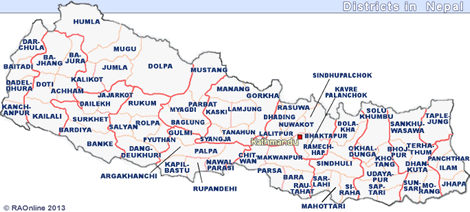 |
| Cordyceps sinensis or Yarcha Gumba |
|
|
|
|
 |
| Chinese Cordyceps fungus (Cordyceps sinensis) - The fungus has been called "Himalayan viagra" |
June 2012
 Cordyceps sinensis |
|
Known in Tibetan and Nepali as "yartsa gunbu" (winter worm, summer grass) and prized in traditional medicine in China and Tibet for centuries, the fungus - some pieces measuring no more than 4cm - retails at up to US$800 for around 28 grams.
Research conducted on the Tibetan Plateau - which encompasses the Tibetan Autonomous Region and Qinghai Province in China - showed a 350 percent increase in the price paid to some harvesters between 1997 and 2004.
"I came because people in my village were talking about how much money people can make during the harvest," said a 34-year-old mother of two who gave her name only as Lakshmi.
Police in Dolpa, a rural Himalayan district on Nepal's western border with Tibet, traditionally rich in yartsa gunbu, told IRIN they estimated that 40,000 people would enter the mountains by the time the harvest ended.
In the district's economic capital, Dho Tarap, citizen committees levy a $33 tax on seasonal migrants and the money is used to subsidize food for villagers in Dolpa and support environmental clean-up.
A former committee member said in one year the revenue was used to purchase seven 40kg bags of rice per household, and in another it was handed out in cash, with each household getting approximately $500. But despite efforts to spread the wealth, residents say the environmental degradation may outweigh the seasonal economic boost.
"More people coming for the harvest means more feet trampling on the grass, and more bushes and shrubs destroyed," said Gyalpo Thandin, 27, a student. "When the grasslands are damaged, our cows and yaks don't have enough to eat, so they die more easily in the winter."
Kedar Binod Pandey, who has been a school principal in Dho Tarap for 19 years, warned: "We can't assume that just because we are making money from the harvest now, that income will always be here for us."
He pointed out that the tax income policy may be short-sighted. "Yes, more people means more money, but it also means more depletion of the yartsa gunbu and destruction of the environment."
The government of Nepal has attempted, with little success, to monitor the harvest. "The impact of the crowds going for the harvest is a concern," said Yajna Nath Dahal, Under Secretary at the Ministry of Forests and Soil Conservation in Kathmandu, in the capital.
"We try to have district forest officers and rangers monitor as much as possible - we know the impact of many people going to the fields is hard on the environment. But the lack of infrastructure in rural areas limits what we can do, so we rely on local committees."
Kakana, 40, a farmer from the neighbouring Jajarkot District, said he had been coming to harvest for the past five years but things had changed. "I used to get 200 pieces before leaving for home. This year I have been here for nearly two weeks and I only have 40."
Experts say the lower yields may be due to a variety of factors. For example, aged yartsa gunbu has typically been left unpicked due to its low market value, but with more harvesters looking for income, even decaying pieces are picked and sold, leaving fewer spores for the following year.
"Sustainable resource management is the best solution to the problem," said Daniel Winkler, an international consultant ecologist and geographer who has researched yartsa gunbu for more than a decade.
He noted that "unprecedented collection intensity", or over-harvesting, the recent economic dependence of local economies on caterpillar fungus collection, and rainfall variability could lead to lower yields this season.
"This yartsa gunbu causes a lot of problems in Dolpa," said Ujol Lama, a guest-house owner in Dho Tarap. He has seen migrant harvesters die from altitude sickness, cold, or a lack of adequate food. "We need a rest or a gap of one year or more so we can think about a better way to do this."
| Source: IRIN 2012 Copyright © UN Office for the Coordination of Humanitarian Affairs 2007 [ This report does not necessarily reflect the views of the United Nations] Integrated Regional Information Networks (IRIN), part of the UN Office for the Coordination of Humanitarian Affairs (OCHA). |

|
| more information on Cordyceps sinensis |
|
| Links |
| External link |
|
 |
|
|
|